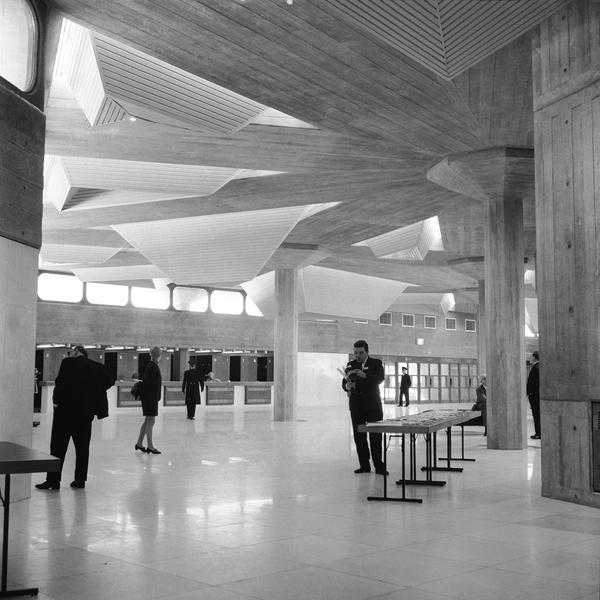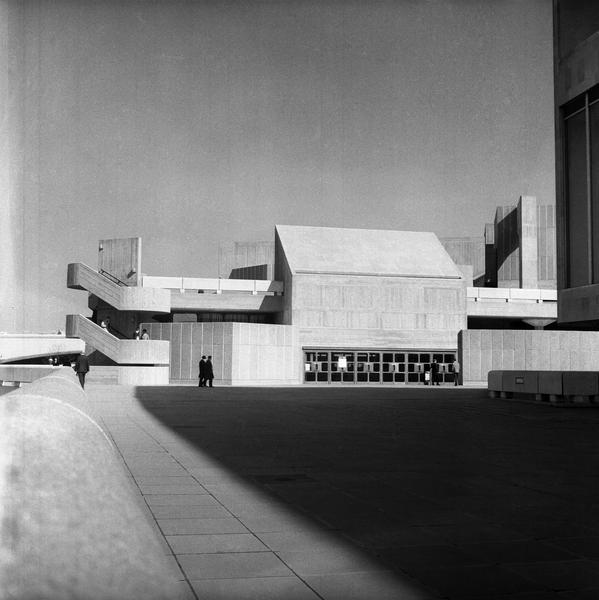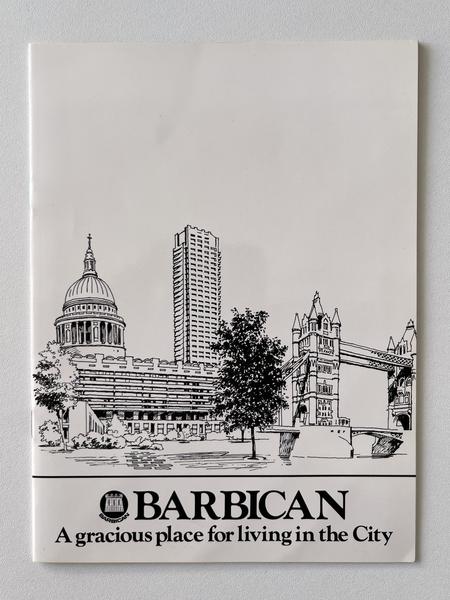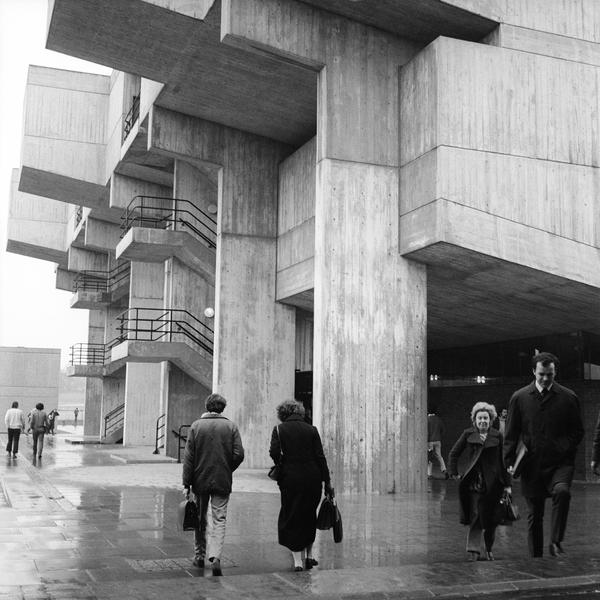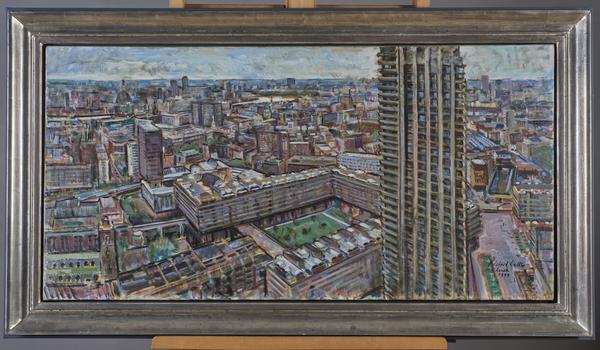London’s Brutalist buildings
Characterised by rough textures, heavy-looking materials and large, unusual shapes, Brutalism is a style of architecture Londoners love to debate. It was once popular for large-scale developments in the 1960s. But these iconic buildings are still a powerful presence on the city’s landscape today.
1960s–1970s

Trellick Tower by Ernö Goldfinger
Rising above North Kensington, Trellick Tower was the tallest social housing block in Europe when it was completed in 1972. This 31-storey estate, designed by Hungarian architect Ernö Goldfinger, has a striking silhouette thanks to the separate tower containing the lift and stairs.

Barbican by Chamberlin, Powell and Bon
The Barbican was built on a City of London site destroyed by bombing during the Second World War. The ambitious project took 11 years to build and was finally completed in 1976. It’s a huge concrete complex – a self contained city featuring 2,000 flats, an arts centre, gardens, shops, schools, a lake and a library.

Southbank Centre by London County Council architects
This riverside arts centre was constructed between 1963–1968 on the site of the 1951 Festival of Britain. Designed by a group of radical young architects, the Queen Elizabeth Hall, Purcell Room and Hayward Gallery stand together as an angular mishmash of concrete cubes and columns.

National Theatre by Denys Lasdun
Built a stone’s throw from the Southbank Centre in 1976, this huge structure is home to three theatres as well as bars, foyers and restaurants. It’s a careful balance of horizontal and vertical lines, featuring angular towers that jut out above the terraces and into the skyline.

Brunswick Centre by Patrick Hodgkinson
Surrounded by Bloomsbury’s Georgian terraces, the Brunswick Centre, completed in 1972, features stepped rows of flats looking down onto a central plaza with shops and a cinema. With a functional, imposing and block-like design, it was listed by English Heritage as a place of special interest in 2000.

Brunel University Lecture Centre by John Heywood
Fans of Stanley Kubrick’s 1971 classic A Clockwork Orange might recognise this overhanging concrete titan. Built in 1966, the Brunel University Lecture Theatre in Uxbridge was used as the film’s dystopian Ludivico Medical Facility. In real life, it’s home to a number of lecture theatres.

Alexandra Road Estate by Neave Brown
Shaped by the curve of a Camden railway line, the Alexandra Road Estate was designed and built by Naeve Brown of Camden Council between 1972–1979. With over 500 apartments, it’s a high-density estate without being a high-rise building. Many trees and plants lining the paths and balconies contrast the unpainted reinforced concrete


